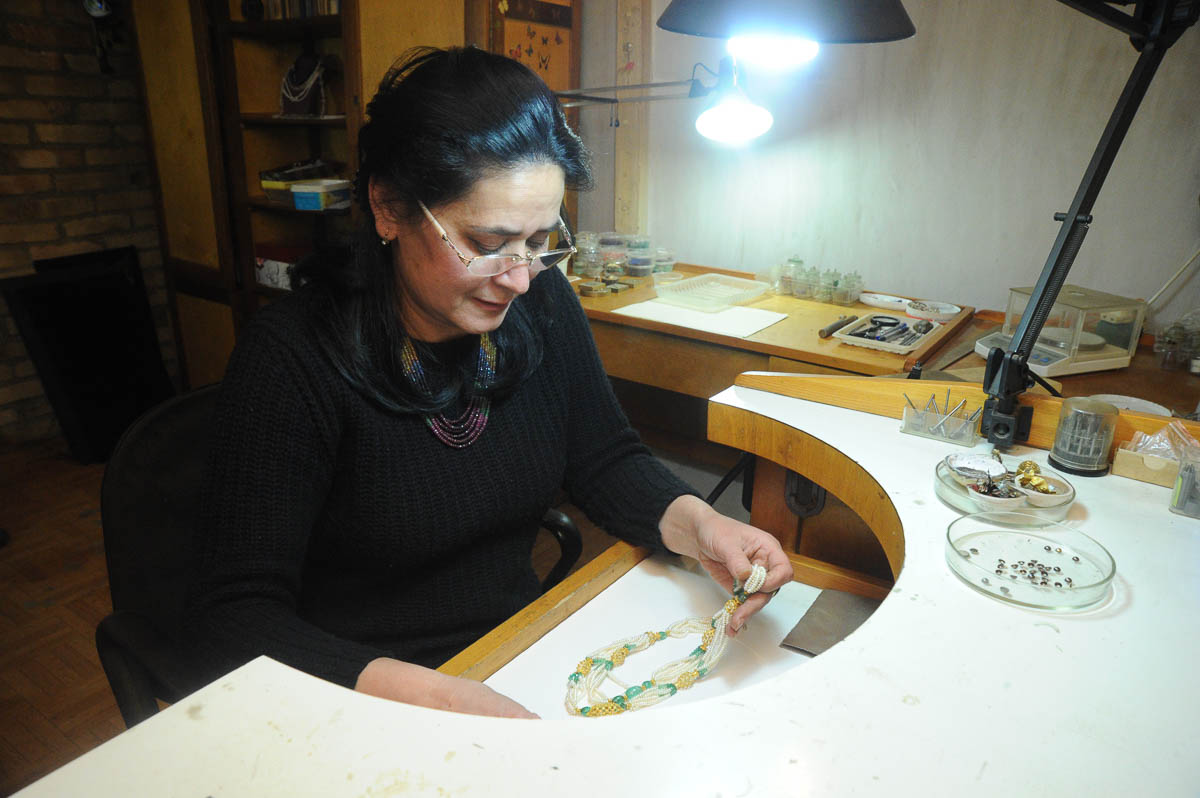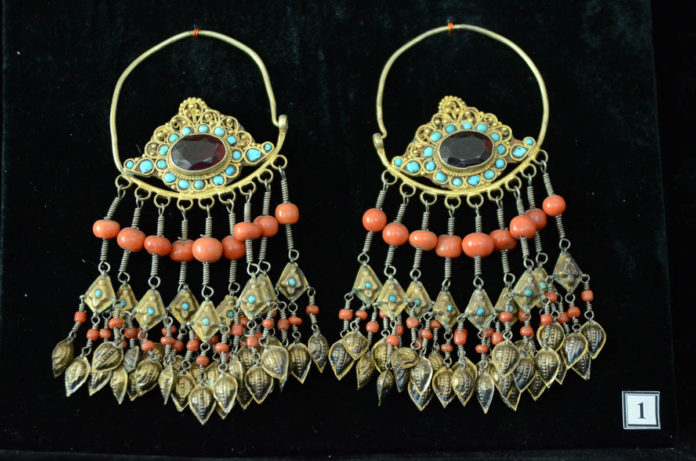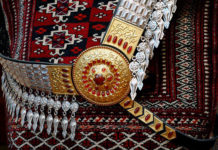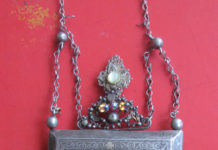Jewellery art is one of the most ancient forms of folk art of Uzbekistan and has maintained its vitality today. The largest centers of Uzbek jewellery art in nineteenth and twentieth centuries were cities of Bukhara, Khiva, Tashkent, Samarkand, Kokand, Karshi, Shakhrisabz and Kitab.

Depending on the purpose, jewellery can be divided into several types. Sometimes jewellery with similar purposes, but made in different regions of Uzbekistan, has different names. Jewellery for the head, forehead and temples includes such names as the takya-tuzi, mohi-tilla ortilla-kosh, toj and bodom-oietc. The forehead-temporal and neck jewellery are known as silsila, tosaukele and shokila. Jewellery for the temples is a special group of decorations, including gajak, kush-duo, butun-tirnok and yarim-tirnok. Occipital jewellery for boys also existed—uk yei, meaning bow and arrow. Plait adornments include sochpopuk and tillo-bargak. Previously, women from regions of Bukhara and Samarkand practiced nose piercing where the nose-ring was called arawak, latiba or latbiniandholbini. The most common products of Uzbek jewelers were ear decorations that included a variety of earrings (halkaor zirak). Large breast ornaments also had different types and names, such as gulband, tepish-e-dil, nozi-gardon, bezzak-kubba, kalit-bogi, buyin-tumor and kukrak- tumor. There were also shoulder axillary charms (kultik-tumor) associated with traditional notion that the soul flies out from the armpits like a bird. Women’s wrist jewellery was very common and included bracelets (bilak-uzuk) and rings (uzuk). The above-mentioned jewellery was widespread in the late nineteenth early twentieth centuries in Bukhara, Tashkent, Khiva, Kokand and Samarkand areas.
In 1920s and 1930s, folk craftsmen and jewelers were restricted to the use of gold and silver. Moreover, the art of jewellery making was regarded as illegal private entrepreneurship. In the middle of the twentieth century, a factory production of jewellery was established in Uzbekistan. This led to the the extinction of the traditional craft of jewelers. Folk artists had to work mostly with not very expressive and uninspiring cupro-nickel alloys.
Currently, the ancient traditions of jewellery are being revived. Well known jewelers of Bukhara, Mr. A.Haydarov and his students, are trying to preserve the old traditions. At the same time, group of jewelers from Tashkent, Mr. F. Dadamuhammedov and his disciples, as well as G.Yuldasheva, working within the framework of national traditions, often depart from the canons, strengthening the author’s interpretation.






I have been to Khiva too – loved the head wear and bought astrakan headpieces but even didn’t see earrings like this at the museum
I was in Usbekistan for 3 weeks travelling from Tashkent across to Khiva staying in good hotels all the way looking at textiles mainly and the incredible tiled buildings. A fabulous experience. Thanks for the link you sent.
Jan Raymond